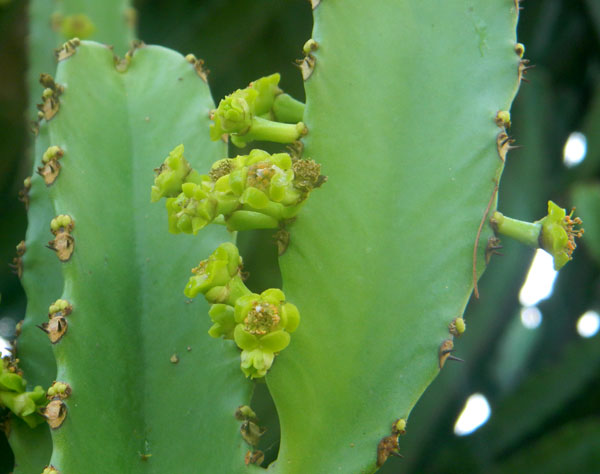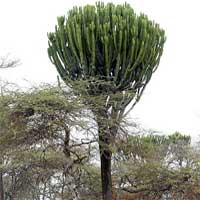Candelabrum
Euphorbia Tree
Euphorbia candelabrum

Candelabrum spurge has such an exotic form that it has become a popular landscape plant. This one is on the grounds of a safari hotel at Amboseli National Park, Kenya, Africa. April 2011.
Tree-sized Euphorbias are frequent in tropical dry forests and sporadically in savanna habitats of Eastern Africa. Like most Euphorbiaceae the plants ooze abundant latex-sap when injured or cut. The sap is highly irritating and also toxic. Using a machete to cut through thickets soon debilitates the human operators. There may be some spines along the corners of the columns giving the plant a cactus-like appearance. There are a couple of similar species distributed in similar habitats of Africa, and this has contributed to some confusion about which name has priority.

The flower structures in the Euphorbiaceae are very unique. Despite this plant being a giant as compared to sandmat spurge, their close relationship is immediately obvious upon examination of the flowers. The flowers at left appear to have five green petals. The 'petals' are actually glands on the lip of a cup-like structure holding a dozen or more very small flowers.